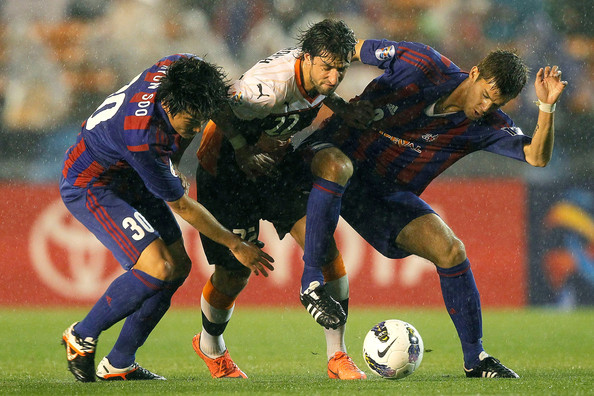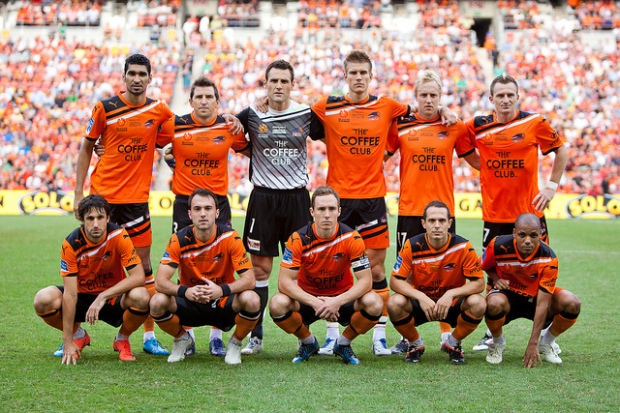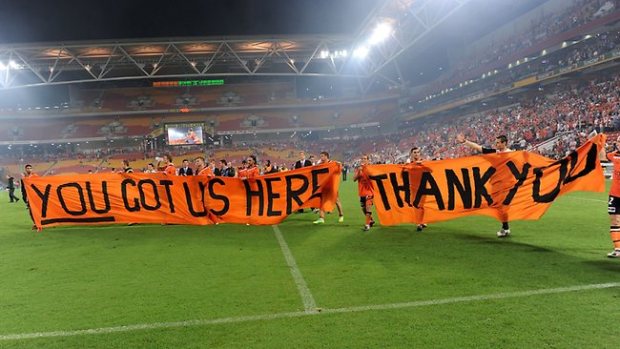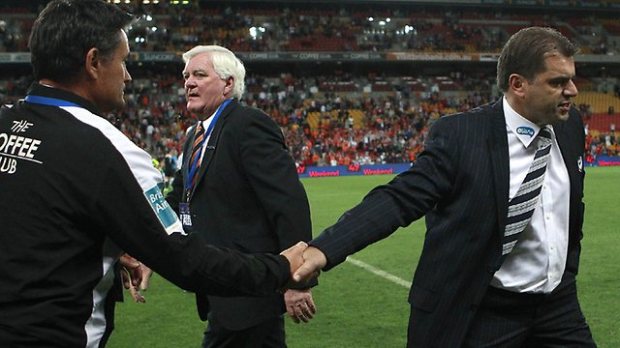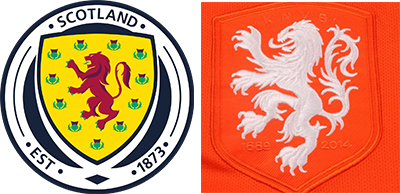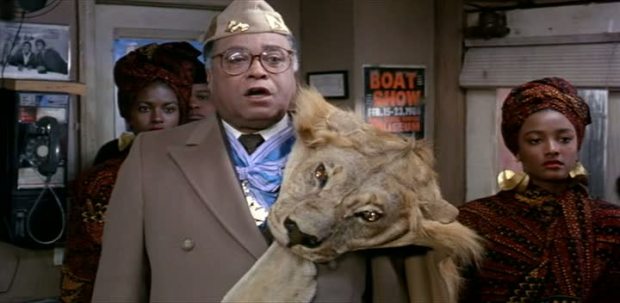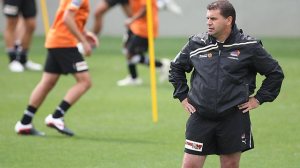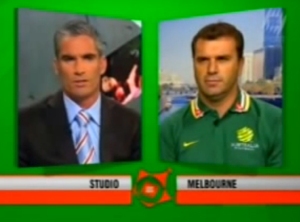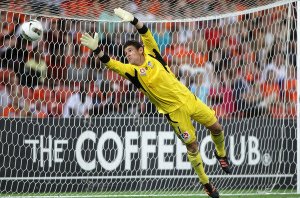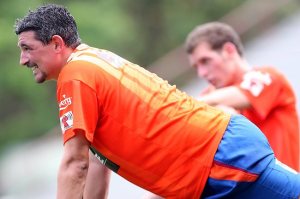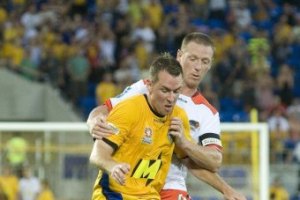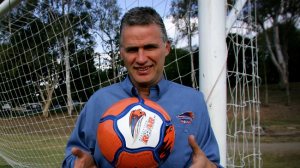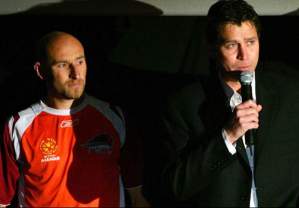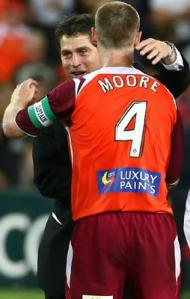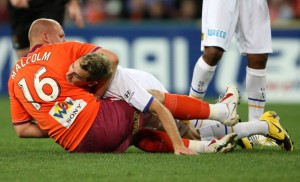This is a continuation from Part 1.
Mulvey was given the task of retrieving any sense of respectability from the season which was shaping up as one of the worst ever – in terms of the gap between pre-season expectations and on-field actualities.
The gap in Rado’s gamut of footballing abilities could be filled by Mulvey: his previous position was with Gold Coast United’s Youth team, and was seen as being able to handle the behavioural issues. He could turn around the team made up, largely, of the same players who had won silverware in the past seasons. He was seen as the person who could get them restarted.
This year was a write-off, but if things turned around well enough, next season could be a good one.
In contrast to the last coach “sacking” (Farina to Postecoglou) there was no toxic team culture to be eliminated. But Mulvey could see that some players needed to be dispatched.
Erik Paartalu – probably the most affected by Postecoglou’s departure – was allowed to leave the club.
With Mohamed Adnan and Issey Nakajima Farran departing after 1 year at the club (for various reasons), 2 foreign player spots had been filled by Yuji Takahachi & Do-Dong Hyun – two young and unheralded players from Japan & Korea respectively. With tight restrictions on foreign players in the league, wasting 2 positions on players who were turning out for the Youth League was rightly seen as a waste and they were sent home.
Other players (Visconte & Fitzgerald) were also offloaded to other clubs, and Jade North & Stef Nijland were brought in.
Steve Lustica was the final player to arrive, and he was one who had previously played under Mulvey at Gold Coast United.
It wasn’t a smooth beginning for Mulvey. After taking control of the team, the Roar went on a run of 7 games with a solitary win and playing some ordinary football. This included an Asian Champions League qualifier that was due to be played in Brisbane, but ended up being played in Thailand after a mess of epic proportions.

The qualifier was due to be played in Brisbane on February 9. Brisbane were due to play in Sydney FC the very next day. In order to move the fixture against Buriram United to a later date, the club had to agree to forfeiting home ground advantage, after Fox & FFA refused to amend the A-League draw to accommodate this fixture.
Why Brisbane couldn’t turn out their first choice squad against Buriram at QSAC on the Saturday night and then field their youth team in Sydney the next day is beyond me.
The game itself was a debacle. Although it hasn’t and cannot been confirmed, I am of the opinion that the owners ordered Mulvey to lose the game to avoid an expensive Asian Champions League adventure that would likely end in failure to concentrate on rebuilding the squad for next season.
The match ended 0-0 with Mulvey making only one enforced injury substitution in 120 minutes, and then NONE of the penalty takers could put a single penalty away in the shootout.
In my mind, this theory was confirmed by the news that greeted everyone the next morning at Brisbane Airport, that Mulvey had been appointed as full-time coach for the next 2 years. It was absolutely extraordinary. Mulvey hadn’t done a lot to particularly fill Roar supporters with confidence that he could get the team back on track and an extension is announced upon returning from an UNSUCCESSFUL continental qualifier. Truly bizarre.

It was no wonder sections of Suncorp had “Mulvey Out” banners. No vision was enumerated and there weren’t frequent signs of a revival in fortunes. All it really did was cement in the minds of the players that “he will be here for the long term, so adjust or leave.”
With what essentially amounted to a vote-of-confidence from the owners, Mulvey was then able to apply his version of discipline on the squad with the tacit approval from the top-brass.
By season’s end, Mulvey had brought about some respectability to the club who had recovered to finish 5th on the table and end the season one game from the Grand Final, which is quite a recovery given how badly the team was traveling at the start of the season.
By the time the next season had rolled around, Mulvey had completed his changes to the squad. The biggest transfer for the club was the return of Matt McKay from an ill-fated overseas venture. McKay was given some incredibly bad advice by former club captain Craig Moore to sign for his former club Glasgow Rangers.
For a versatile and technically gifted player like McKay, the Scottish Premier League was a terrible move. But after a detour to Korea and China, he was back in Orange to continue where he had left off after the club’s initial success in 2010/11.
After a successful pre-season, expectations were high.
Brisbane won their first 2 matches and were due to play Postecoglou’s Melbourne Victory in Round 3. Ange had a full season under his belt and expectations were also high on the southern side of the Yarra. Complicating this game was that Ange had just been given approval to become the new National Team coach and his final game as coach of Victory would be against Brisbane Roar.
Instead of another 5-0 masterclass, it was a dour affair deserving of a scoreless draw before the Victory snatched the 3 points with a well-taken late goal. The performance was strange by Brisbane. But it wasn’t the last time they played in a totally unexpected manner. Despite some times showing up and playing absolutely spectacular football, other times the effort was ordinary and looked like players would rather be elsewhere.
Despite his slip-up, the pundits generally lauded the way Mulvey had the team playing. They were aggressive, they kept possession, they played entertaining football in the Ange fashion. And it shouldn’t surprise given he still effectively had Ange’s Orange team and was continuing on in his tradition.
Despite topping the table at the end of the season by 10 points, Brisbane lost 7 matches along the way (4 of them at home) and 5 of them to teams finishing on the bottom half of the ladder. The fact that Brisbane lost to Newcastle in all 3 games had fans tearing their hair out. In one week, Brisbane followed their two best performances of the season (5-2 v Sydney and 3-0 v Melbourne – both away from home) with a home loss to Adelaide.
But the opposition teams also kept dropping points and no-one could catch Brisbane.

A semi final win against Melbourne Victory saw Brisbane win a third home Grand Final in 4 years against Western Sydney Wanderers.
Mulvey took the prize for the coach of the year, Thomas took the Johnny Warren medal for the best player of the league, the players celebrated a job well done. All happy and content.
When the start of this year (2014/15) came rolling around, there was an expectation that the club should be able to roll on unhindered to more success.
But there is an impediment to this continuity. Two of Brisbane’s most important players have left the club: Ivan Franjic (recruited by Ange Postecoglou in the dark days of the purge) and Besart Berisha (the league’s most proficient striker imported AFTER the Roar’s first title win).
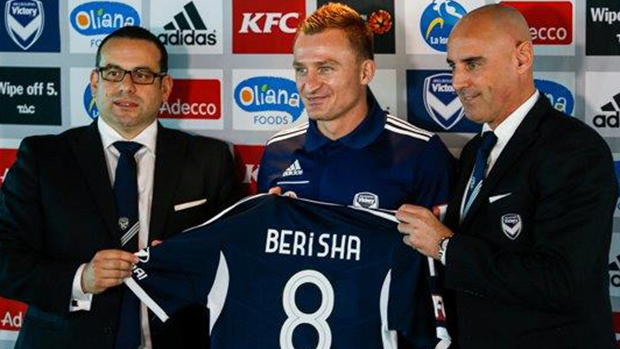
A lot has been said about Berisha and Brisbane’s reliance on him. He is a fantastic striker – surely one of the best this country has seen. But the fact remains that Brisbane’s best TEAM performances from last year came about when he was either injured or suspended. The team CAN play without him. They just have to be reassured.
It can be argued that Ivan Franjic is an even bigger loss to the team. His versatility, ability and work rate makes him possibly the biggest loss of any club in the league this season.
There was one other lesser-profile departure that would end up causing much more disruption than first planned. Reserve goalkeeper, and local boy, Matt Acton was pushed aside while an unknown Jamie Young was installed as back up the Michael Theo.
Alarm bells rang after some pre-season performances that failed to meet expectations: losses to Sydney FC and Adelaide and a struggling draw with Central Coast didn’t bode well for the opening of the season.
In fact it has been much worse. The players were well aware of the sub-standard performances by the team. Senior players had some ideas for Mulvey. But Mulvey refused to even entertain their thoughts. Mike knew best.
This is a quote from another coach and someone who used to work with Mulvey and knows him quite well:
…everyone must bow down and worship Mulvey at his feet.
Some of the players in the squad have won the title 3 times in 4 years. They didn’t just blow in on the last coaching change and ride on the structures built before them. They have earned their right to be heard.
But since Mulvey wouldn’t accept any advice from players, they sought out someone who WOULD listen. And someone who had a platform to broadcast it. Enter Craig Moore’s weekly football column for the Brisbane Sunday Mail.
Moore has become active once again within the club (quite controversially and to the disgust of others) and just so happened to have a few column inches to fill, and so he has been used a vehicle for disgruntled players to vent frustrations to the punters. That’s quite something to build team harmony every week.
And it isn’t that Moore is completely blameless in this as “just reporting the facts”, Moore also has his own political games to play within the club.
The next disaster to befall Brisbane was in a training incident, Michael Theo suffered a broken wrist during routine goalkeeper training. That meant that new reserve goalkeeper Jamie Young would begin the season as the club’s uncontested number one.

This move put a few noses out of joint as well. Young was recruited to the club by goalkeeping coach Jason Kearton who is a close friend of Young’s. But the club already had two goalkeepers so Matt Acton had to be disposed of. Acton is a local product and had acquitted himself with competency and shown his ability when called upon for the team during Theo’s last injury spell in 2013/14.
Brisbane eventually sent out an SOS to Matt Acton to rejoin the club as an injury replacement, which he was most gracious in accepting. I know what I’d have said if I was shoved aside in the manner he was and it isn’t printable here.
Maybe the players could swallow it if their new first choice goalkeeper was competent. But playing in the Conference South (6th tier) of English football doesn’t exactly provide one with confidence.
In fact once the season proper began, there was no doubt. It was a debacle. One of Michael Theo’s abilities that all goalkeepers across the league have is to become an extra defender. To be comfortable with the ball at their feet and distribute it across the back line. That is non-existent with Young. Young has admitted he isn’t strong with is feet and is still learning after playing in what amounts to pub-teams.
His abhorrent distribution has put the back four under enormous pressure in front of their own goal and are punting the ball up field more than ever. When he plays a long pass to a winger (either Broich or Petratos), the ball almost always ends up with the oppostion or out for a throw in.
As I write this, it is now 4 consecutive losses for Brisbane. The worst start to a season ever by any team in this league, and this is a team that romped to the title by 10 points last season.
The players can all see it. They all know it. They players don’t like to be played as mugs by the coach.
Most (if not all) fans have continually been calling for Acton’s reinstatement as first-choice back-up keeper. But it won’t happen:
1. Dropping Young for Acton means that Kearton’s position as goalkeeping coach is untenable. It totally eliminates any credentials he has as a footballing professional who installed an unsuitable and sub-standard player because of cronyism.
2. It reflects back on Mulvey’s ability to take advice. As much as Kearton is culpable here, Mulvey still has the final say on all matters. He is the head coach and his decision is final. This is slightly different from the failed Donachie/Hingert experiment. Acton was actually forced out of the club.
In fact, I would go so far as to say that the dreaded C word had crept into the coaching staff – “complacency“.
After losing two games Mulvey was asked what he was going to change to address the poor form: “Nothing” came the reply. Essentially the playing style was good enough to win last year, so it will be good enough this year too. But that is the fallacy that will be the down fall.
Last year saw massive transitions in coaching staff. Between the start on 2013/14 and the start of 2014/15, 7 of the 10 clubs had new coaches. Adelaide and Melbourne Victory have had a full season under their belts with coaches. Graham Arnold left Central Coast mid season to return to Sydney FC this season after their underwhelming years with Frank Farina. The league has caught up, but someone hasn’t noticed.
So, of course last year was successful when you consider the fluid coaching situation around the league. And does Mulvey NOT expect rival coaches to study your playing style with an eye for breaking it down? It’s called evolution, and the moment you stop evolving, you become extinct.
The season after you win trophies is usually difficult. Playing staff turnover is natural in this country. But it could be argued that player turnover was worse after the first success in 2010/11 and the club continued on to be the first to win consecutive toilet seats.
The bulk of the players have won trophies at this very club. Some have won 3 in 4 years. They can perform. They are proven winners. But when some blow-hard with a case of megalomania drops in, who thinks the world revolves around him after one successful year when the odds were stacked in his favour, you know it won’t be long before his house of straw is blown away by the Big Bad Arnie.
The players have been described as looking disinterested. I wonder why?

Something has to give.
It won’t be long.
